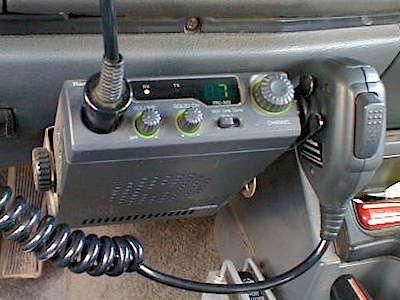Been there, done that.
A little history lesson for the kids today. At least anyone under forty. CB radio (Citizens’ Band) emerged in the late forties in the U.S. and peaked in popularity in the seventies. The equipment required was a radio set which could be mobile (either vehicle mounted or handheld) and an antenna, which was known as a whip. No license was required to operate a CB Radio.
I became awestruck by this technology in the seventies growing up near Stratford, Ontario. Or, as it is now known, as the birthplace of the social media phenomenon @JustinBieber. Life in the rural setting highlighted the need for the solution that CB Radio offered. With the nearest neighbour at least a half mile away and phone lines actually shared among them, personal communications (without a CB Radio) amounted to yelling at someone. Imagine if you will, that with a CB Radio you could interact with all kinds of people with some degree of anonymity, in real time! Wow, it was even possible to talk to someone as far away as 10 miles (16 kilometers)!
The 70’s.
Use of CB Radio’s exploded and protocols and quasi rules began to entrench themselves. CB Radios had “channels” dedicated to emergencies (channel 9) as well they had specific channels for the type of audience (truckers used channel 19) and sometimes geography. If you had two truckers conversing, they often would change to another channel.
There was no better illustration of the popularity of this technology than to see it as major part of the 1977 “hit” movie, Smokey and the Bandit.
You’re breaking up,10-4.
One of the limitations of the CB Radio was its bi-directional nature, that is only one person could transmit (talk) at a time. To make things worse, if two or more people keyed their mics at the same time, most, if not all of what the person or persons were trying to say would be effectively garbled.
The CB Radio audience developed a unique lingo to communicate. In this way, you could be assured you were communicating with someone who knew the technology. ‘Bears” referred to police, while codes like ’10-20’ mean’t location, as in “What’s your 10-20?”
Where’s your handle now?
In addition to channels, lingo or slang, If you watched the trailer above, you will hear Burt Reynolds referring to “handle”. This is how the CB Radio users stayed somewhat anonymous. “CB Handles” were self assigned unique identifiers of the user (for example “The Bandit”.
Like all things that get too popular, too fast CB Radios faded out for everyone, except truckers. Channels got overcrowded, noisy and better technology came along in the form of mobile phones.
Back to the future.
Is Twitter the new CB Radio? Do the following attributes of CB Radios, sound like Twitter?
- ‘handles’ as identifiers
- one to many communications
- one to one communications
- channels for specific uses
- trolls (CB trolls used mic interference to disrupt communications)
- you connect with complete strangers or friends
- low investment and no variable cost to participate
- the value of a CB Radio was multiplied by the number of connected devices
- you shared where your were at, what your were doing and what everybody else was doing wrong
- sometimes it seemed like everyone was talking and no one was listening
The parallel between Twitter and CB radio is that we like to talk about ourselves and we need to know that there are others that possibly share our view of the world. The need to share is a primary driver of both technologies.
Twitter connects people and allows them to efficiently share. I think that as a sharing tool, it is superior to CB Radios in that the geography is unlimited and you don’t need to be on Twitter 24/7 to get updates. It can be live, but, it also is effective as an on-demand, information consumption/broadcast tool.
#Evolution
Maybe the most important consideration and difference is that Twitter is being used by marketers. Brands can effectively use Twitter to achieve different objectives with the users (consumers) and this makes Twitter valuable.
Once again, Twitter isn’t revolutionary, it’s evolutionary. Marketers should focus on which consumers are using Twitter and why they are using it. The only sure thing about the technology is that it will continue to change.



